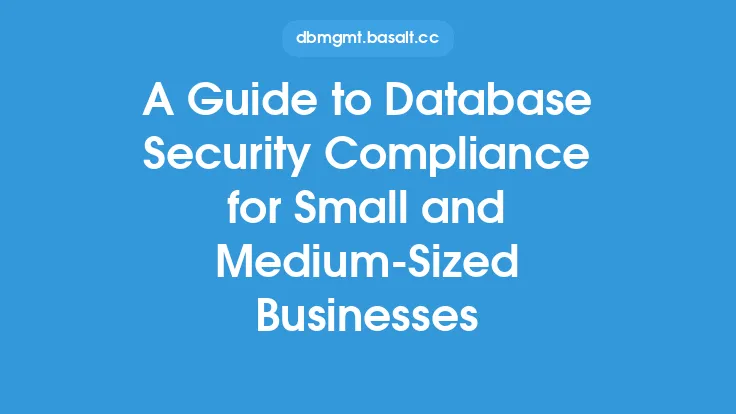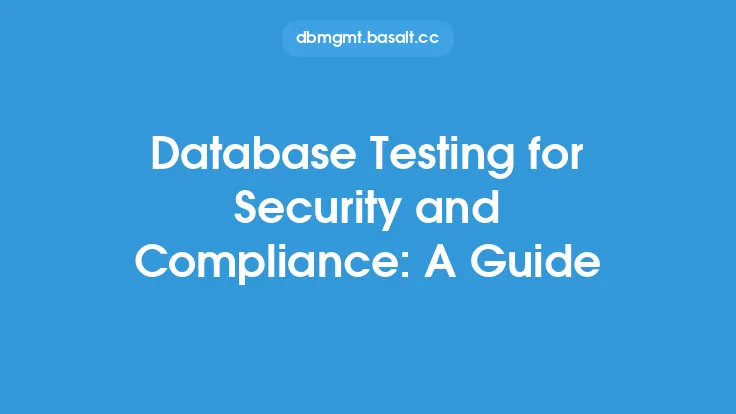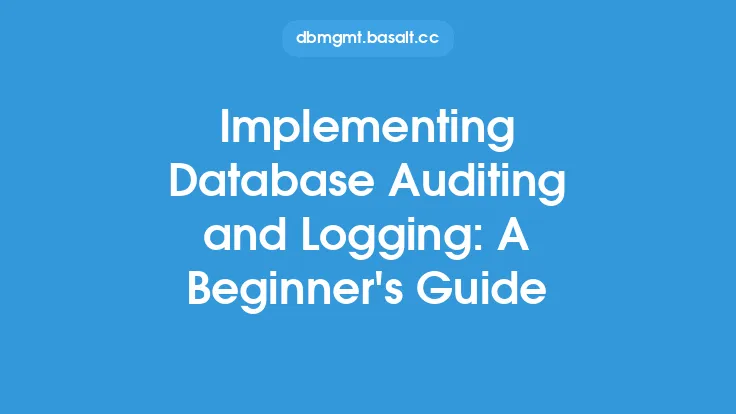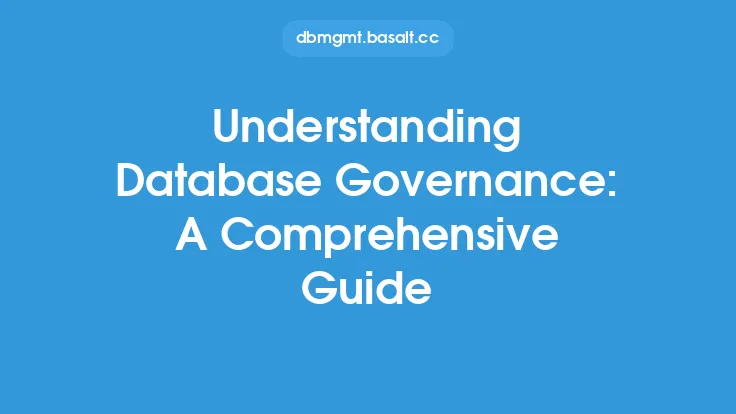Database security is a critical aspect of any organization's overall information security posture. As databases contain sensitive and confidential information, it is essential to implement robust security measures to protect them from unauthorized access, use, disclosure, disruption, modification, or destruction. One way to ensure the security of databases is by adhering to established standards and frameworks. These standards and frameworks provide a set of guidelines, best practices, and requirements that organizations can follow to secure their databases and maintain compliance with regulatory requirements.
Introduction to Database Security Standards
Database security standards are a set of rules and guidelines that outline the requirements for securing databases. These standards are typically developed by industry organizations, government agencies, or other reputable bodies. They provide a framework for organizations to follow when implementing database security measures, ensuring that databases are protected from various types of threats. Some of the key database security standards include ISO 27001, NIST Cybersecurity Framework, and COBIT. These standards cover various aspects of database security, including access control, data encryption, auditing, and vulnerability management.
Database Security Frameworks
Database security frameworks are structured approaches to implementing database security measures. They provide a comprehensive and systematic way to identify, assess, and mitigate database security risks. A database security framework typically consists of several components, including policies, procedures, standards, and guidelines. It also includes various security controls, such as access controls, data encryption, and auditing mechanisms. Some popular database security frameworks include the NIST Cybersecurity Framework, the ISO 27001 framework, and the COBIT framework. These frameworks help organizations to establish a robust database security posture and ensure compliance with regulatory requirements.
Key Components of Database Security Standards and Frameworks
Database security standards and frameworks typically consist of several key components. These components include:
- Access control: This component outlines the requirements for controlling access to databases, including authentication, authorization, and accounting (AAA) mechanisms.
- Data encryption: This component outlines the requirements for encrypting data in transit and at rest, including the use of encryption algorithms and protocols.
- Auditing and logging: This component outlines the requirements for auditing and logging database activities, including the collection, storage, and analysis of audit logs.
- Vulnerability management: This component outlines the requirements for identifying, assessing, and mitigating database vulnerabilities, including the use of vulnerability scanning tools and patch management processes.
- Incident response: This component outlines the requirements for responding to database security incidents, including the establishment of incident response plans and procedures.
Benefits of Implementing Database Security Standards and Frameworks
Implementing database security standards and frameworks provides several benefits to organizations. These benefits include:
- Improved database security: By following established standards and frameworks, organizations can ensure that their databases are protected from various types of threats.
- Compliance with regulatory requirements: Many database security standards and frameworks are designed to help organizations comply with regulatory requirements, such as HIPAA, PCI DSS, and GDPR.
- Reduced risk: By implementing robust database security measures, organizations can reduce the risk of database security breaches and incidents.
- Improved incident response: By establishing incident response plans and procedures, organizations can respond quickly and effectively to database security incidents.
- Cost savings: By implementing database security standards and frameworks, organizations can avoid the costs associated with database security breaches and incidents.
Best Practices for Implementing Database Security Standards and Frameworks
To implement database security standards and frameworks effectively, organizations should follow several best practices. These best practices include:
- Conducting regular risk assessments: Organizations should conduct regular risk assessments to identify and assess database security risks.
- Establishing clear policies and procedures: Organizations should establish clear policies and procedures for database security, including access control, data encryption, and auditing.
- Providing training and awareness: Organizations should provide training and awareness programs for employees and stakeholders on database security best practices.
- Continuously monitoring and evaluating: Organizations should continuously monitor and evaluate their database security posture, including the implementation of security controls and the detection of security incidents.
- Staying up-to-date with regulatory requirements: Organizations should stay up-to-date with regulatory requirements and industry standards, including updates to database security standards and frameworks.
Common Database Security Standards and Frameworks
There are several common database security standards and frameworks that organizations can follow. These include:
- ISO 27001: This is an international standard for information security management systems, including database security.
- NIST Cybersecurity Framework: This is a framework for managing and reducing cybersecurity risk, including database security risk.
- COBIT: This is a framework for IT governance and management, including database security.
- PCI DSS: This is a standard for securing credit card data, including database security requirements.
- HIPAA: This is a standard for securing protected health information, including database security requirements.
- GDPR: This is a regulation for protecting personal data, including database security requirements.
Conclusion
In conclusion, database security standards and frameworks are essential for ensuring the security and integrity of databases. By following established standards and frameworks, organizations can protect their databases from various types of threats, comply with regulatory requirements, and reduce the risk of database security breaches and incidents. It is essential for organizations to understand the key components of database security standards and frameworks, including access control, data encryption, auditing, and vulnerability management. By implementing these standards and frameworks, organizations can improve their database security posture, reduce risk, and avoid the costs associated with database security breaches and incidents.





